#Coccoidea
Text
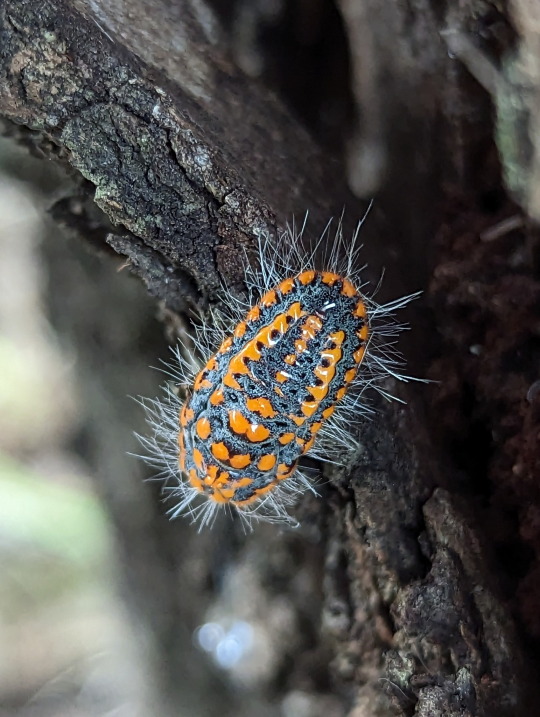

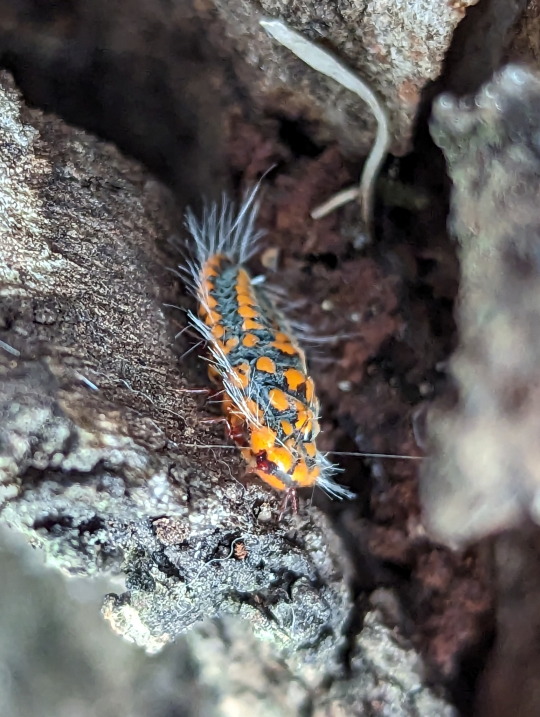
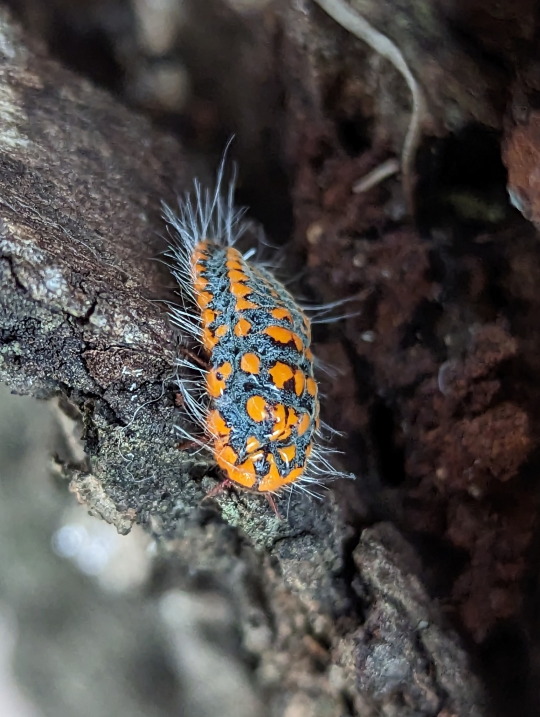

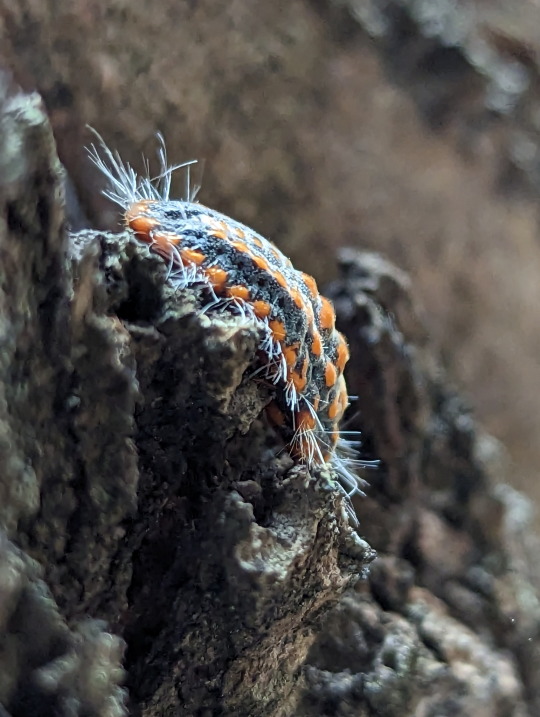
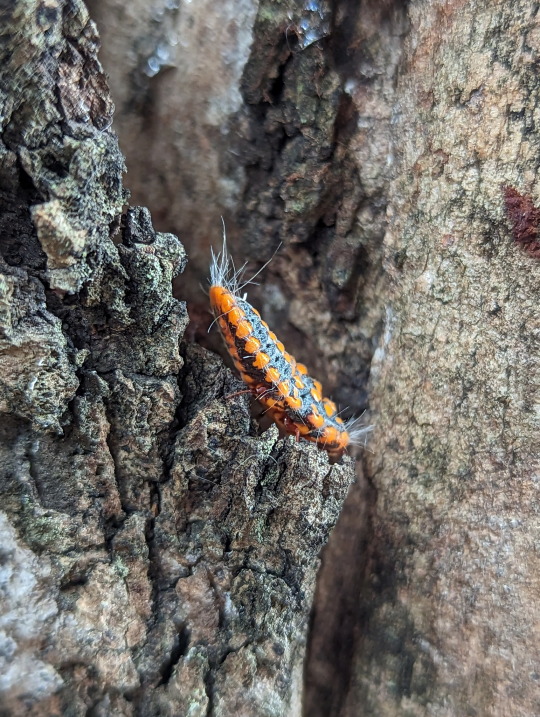
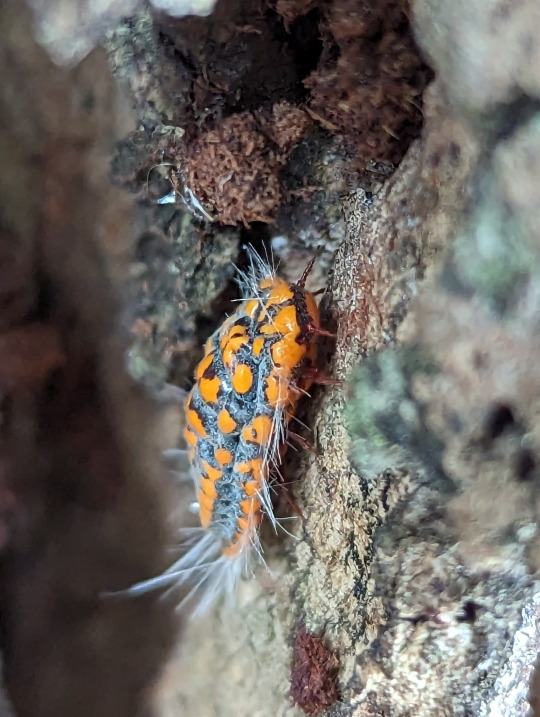
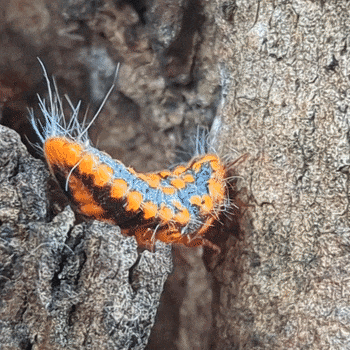

Giant Scale Insect
I got a bit of a shock when I saw this thing.
At first I thought it might've been the larva of those big leaf beetles I found. Was very surprised to discover it was a scale insect.
Unidentified, genus Monophlebulus
28/03/23
#Monophlebulus#unidentified#Giant Scale Insects#Monophlebidae#Coccoidea#Scale Insects#Sternorrhyncha#Plant-parasitic Hemipterans#Hemiptera#gifs#invertblr#invertebrates#Arthropods#Arthropoda#bugs#bugblr#bugs tw#insects#insecta#insectblr#entomology
894 notes
·
View notes
Text
Vida's Sheep Jumping Spider: researchers believe that these tiny spiders developed their "woolly" appearance as a way to mimic lacewing larvae or scale insects

The scientific name for this species is Oviballus vidae, but it has also been referred to as the "sheepy jumping spider" or "Vida's jumping spider." It was discovered in 2015, and first described (in a formal context) back in 2020.

As this article (PDF) describes:
Recently, two new salticids, R. legitima and Oviballus vidae were described from South Africa, and suggested to be mimics of either scale insects (Hemiptera: Coccoidea) or lacewing larvae (Neuroptera: Chrysopidae), due to their white colouration and the presence of peculiar tufts of white setae on the body.

The possibility of [scale insects] being the model is supported by Oviballus vidae being regularly collected from plants with woolly scales, although the movements of O. vidae quite closely resemble those of chrysopid larvae.
In fact, a fourth species of possible scale mimic, a new Rhene species, was recently discovered in a collection of salticids
from southern Mozambique, indicating that this phenomenon may be more widespread than has previously been known or even suspected.

O. vidae was named after Vida van der Walt, the photographer who captured some of the first images of these spiders back in 2015, just after the species was discovered by Dr. Galina Azarkina. Vida van der Walt also took the photographs that appear in this post.
Sources & More Info:
Arthropoda Selecta (scientific journal): Rediscovery and Redescription of Rhene cooperi, another possible mimic of scale insects (PDF)
Spider Club of South Africa: Two New Species Named After SA Photographer (PDF, with the relevant info on page 5)
Field Guide to the Spiders of South Africa: Section on Vida's Sheep Jumping Spider
#arachnology#jumping spider#oviballus vidae#mimicry#cute bugs#animal facts#lacewing larvae#scale insects#south africa#wildlife#cute spider#sheep jumping spider#arthropods#cw spiders#but it's a really fluffy spider
104 notes
·
View notes
Text
Coccoidea
An archwing whose design was directly overseen by the Quill of the Naiads. In the Quill’s prophecy some of the Tenno would set aside their arms to heal each other, and this set of angelic wings was made for these battlefield medics.
Health: 150 (450 at rank 30)
Shields: 500 (1500 at rank 30)
Armor: 300
Energy: 200 (360 at Rank 30)
Sprint Speed: 1.1
Ability 1: Serial Slingshot, 30 energy. Throws out a winged drone that does extremely close fly-byes of both allies and enemies. When activated, targets the ally or enemy closest to the player’s crosshairs within 480 meters for a fly-by and then automatically targets the nearest viable ally or enemy unit within 360 meters of its new location, and then again with a max range of 240 meters, and 120 for all subsequent fly-byes up to a maximum of 12. Maximum charge count is affected by ability duration. The Serial Slingshot’s drone cannot target the last unit it performed a fly-by on for its next fly-by. If there is no viable target for the drone while it has charges remaining it will disappear and refund 10 energy. Only one instance of Serial Slingshot can be active at once. When the Serial Slingshot drone performs a fly-by on an enemy it deals 450 slash damage with 30% status chance and when it performs a fly-by on an ally it restores up to 300 points of shields and causes the target’s shields to begin regenerating.
Ability 2: Lockdown Pulse, 50 energy. Releases a wave of energy that disrupts enemy craft and weapons. Wave begins with a 5 meter radius at the player’s current position and propagates outwards at a rate of 25 meters per second for 15 seconds. The wave destroys enemy projectiles and disables enemy units for 15 seconds after passing over them, leaving them unable to move, attack, or use abilities. Enemies affected by Lockdown Pulse have a 15% chance to drop an additional health or energy orb on death.
Ability 3: Solvent Satellite, 75 energy. Deploys an automated satellite which follows the player, or the targeted ally. If the satellite’s host is missing health or shields it will target them with a restorative beam which restores 20 health/shields per half-second. While this beam is active the host also gains +25% damage resistance. If the host is at max health & shields the satellite will instead fire a caustic beam at enemies within 150 meters which deals continuous toxic damage with 20% status chance. Solvent Satellites have health, shields, and armor equal to 75% of Coccoida’s, and last up to 45 seconds or until destroyed. Multiple Solvent Satellites can be active at once but cannot be placed on the same target.
Ability 4: Chemtrail, toggled ability costs 15 energy to activate and 3 energy per second. While active Chemtrail causes Coccoidea to leave a trail of vapors behind itself as it flies. Produces lingering vapors in a 25 meter radius around the player which lingers for 20 seconds. Enemies that enter the vapor trails take 200 toxic damage per half-second with 40% status chance. Allies that enter the vapor trail gain 50% damage reduction. Both allies and enemies spread the vapors with their own movements for 5 seconds after leaving the progenitor trail’s zone. These secondary trails are not contagious but otherwise have the same effects as the progenitor trail.
7 notes
·
View notes
Text
Dimorfismo sessuale.
Per dimorfismo sessuale (dal greco "due forme") s'intende la differenza morfologica fra individui appartenenti alla medesima specie ma di sesso differente.

Il dimorfismo ha principalmente la funzione di attrarre l'altro sesso: è infatti tipico di animali poligami, dove durante la stagione degli amori i maschi duellano per la conquista di un territorio.

In animali monogami, invece, viene sacrificata la possibilità di avere progenie più numerosa in favore di uno sforzo congiunto per l'allevamento della prole: essendo il partner fisso, le strutture per la difesa dell'harem divengono inutili.
Le caratteristiche sviluppate dai maschi per attrarre le femmine li rendono svantaggiati rispetto a queste ultime, poiché, a causa dei colori sgargianti, sono facilmente localizzabili dai predatori. Le lunghe penne o gli speroni rendono molto più lenti e impacciati nella fuga.
La teoria di questo tipo di dimorfismo si dice "della disabilità": in un organismo il successo riproduttivo conta più della sopravvivenza, e quindi non è importante che un maschio di fagiano comune viva meno di una femmina, se questo permette di lasciare più progenie possibile.
Nella specie Homo sapiens i maschi sono mediamente più alti, più pesanti, più robusti e più forti delle femmine, che da parte loro hanno il bacino più largo e più inclinato all'indietro, spalle più strette, una diversa distribuzione del grasso corporeo e voce più acuta. I maschi inoltre presentano una maggiore quantità di peli (soprattutto sul viso).
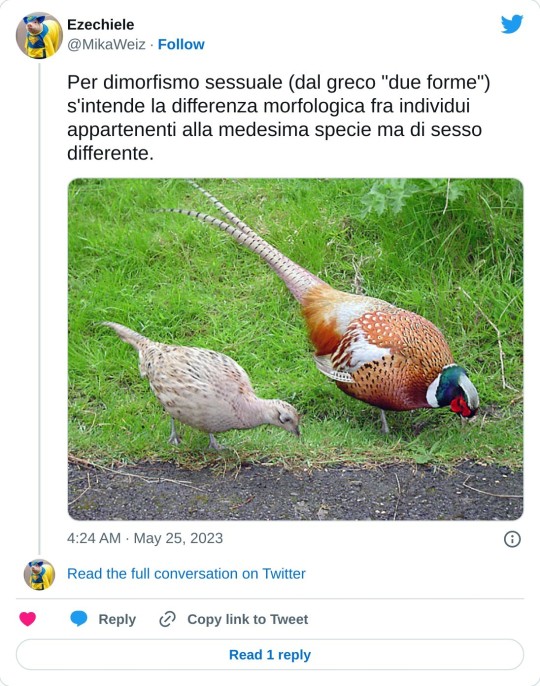
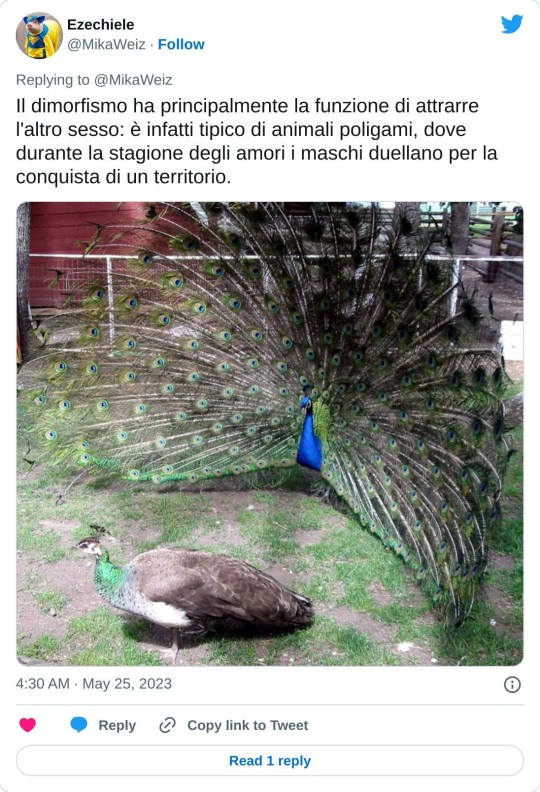


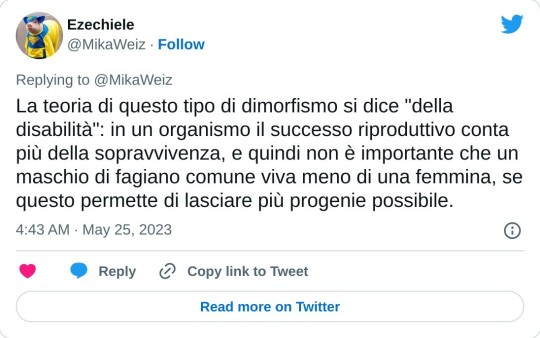

In alcune specie di rane pescatrici, i maschi sono semplici sacchetti di carne senza apparato digerente, che si attaccano alla femmina conducendo una vita parassitica e producendo sperma come unica attività autonoma.

Una situazione simile la si può osservare nell'emittero Veliidae Phoreticovelia disparata (cimice di Zeus), dove il maschio si aggancia alla femmina nutrendosi da un'area ghiandolare posta sul dorso della stessa, anche se può vivere autonomamente.

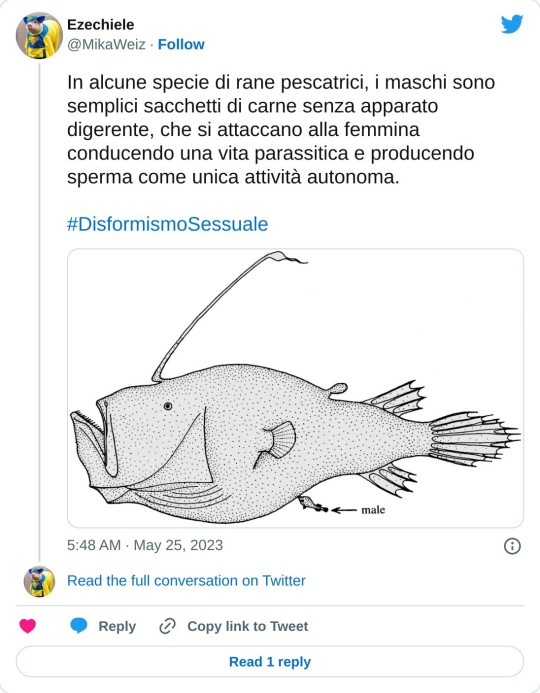

Nella maggior parte delle cocciniglie, le femmine mancano degli occhi e delle ali, hanno zampe atrofizzate e vivono permanentemente fissate alla pianta ospite, mentre i maschi hanno dimensioni minori e sono alati.
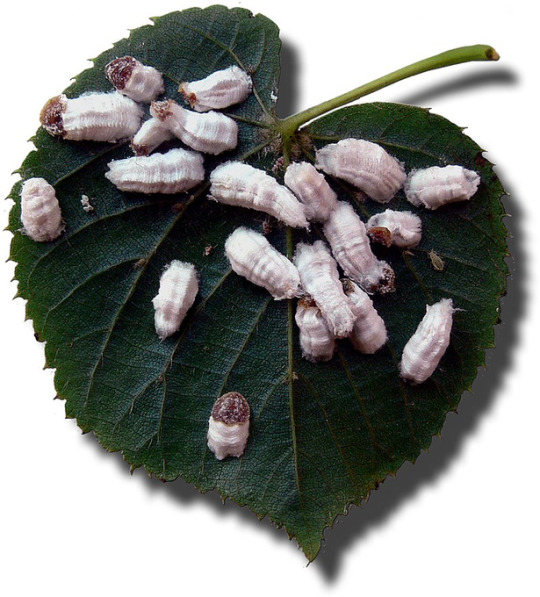
Le cocciniglie o, impropriamente, coccidi (Coccoidea Handlirsch, 1903), sono una superfamiglia di insetti fitofagi compresi nell'ordine dei Rhynchota (sottordine Homoptera, sezione Sternorrhyncha). Il nome cocciniglia deriva dallo spagnolo cochinilla ("porcellino di terra"). Sono insetti esclusivamente fitomizi e costituiscono uno tra i più importanti raggruppamenti di insetti dannosi. La caratteristica generale che contraddistingue questi insetti è il marcato dimorfismo sessuale e la regressione morfologica, anatomica e funzionale delle femmine (neotenia).

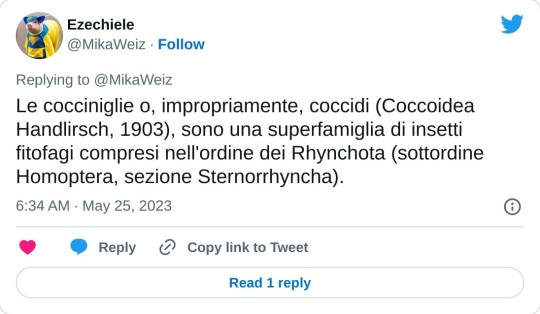

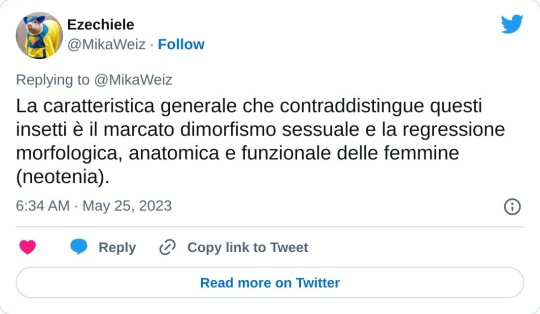

#disformismo sessuale#teoria della disabilità#teoria#disformismo#maschio#femmina#differenze#Homo sapiens
3 notes
·
View notes
Text
Saissetia oleae pdf file
SAISSETIA OLEAE PDF FILE >>Download (Telecharger)
vk.cc/c7jKeU
SAISSETIA OLEAE PDF FILE >> Lire en ligne
bit.do/fSmfG
point noir sur branche olivier
traitement olivier savon noircochenille olivier
photo cochenille noire
Saissetia oleae. La cochenille noire de l'olivier effectue une seule génération par an. Comme pour tous les insectes piqueurs suceurs, les dégâts occa-. 1 mars 2022 — la cochenille du café (Saissetia coffeae) la cochenille noire (Saissetia oleae). Mode d'action et efficacité. C'est un prédateur des œufs de. de Y LAUDEHO · Cité 1fois — ces de la Cochenille noire, Saissetia oleae OLIV. (ARGY Species of Coccinellidae in olive groves of Greece. {à paraître). HAGEN {K.S.). 1962. de M CANARD · Cité 7fois — ETUDE D'UNE DEUXIEME GENERATION D'HIVER DE. SAISSETIA OLEAE OLIV. (HOM., COCCIDAE) EN ATTIQUE. (GRECE) ET DE SA REDUCTION PAR METAPHYCUS LOUNSBURYI. MOUCHE DE L'OLIVE Bactrocera oleae. C'est le principal ravageur de l'olivier. Les dégâts occasionnés par la larve peuvent remettre en cause la totalité de Text of La cochenille noire de l'olivier Saissetia oleae BERN. · PDF fileLa cochenille noire de · La cochenille noire de lolivierSaissetia oleae BERN.DE SAISSETIA OLEAE (OLIVIER). (IIOMOPTERA, COCCOIDEA, COCCIDAE). DANS LA REGION. DE MOULAY IDRISS DU ZERHOUN. M. EL HOMRITI er M. I ARAICHI *. de T Saliha · 2021 — Cycle biologique de la cochenille noire de l'olivier (Saissetia oleae) .……………22. Figure 14. Nous avons présenté le document comme suit :. gique contre la Cochenille noire, Saissetia oleae. Ce nouvel aspect de l' activité de Centre a fait l'objet d'un Avenant au Plan d'Opération.
https://www.tumblr.com/fomulawowe/698380247259824128/homdox-cat-feeder-notice-mode-demploi, https://www.tumblr.com/fomulawowe/698380247259824128/homdox-cat-feeder-notice-mode-demploi, https://www.tumblr.com/fomulawowe/698381070409793536/2004-explorer-service-manuel-mode-demploi, https://www.tumblr.com/fomulawowe/698381239672094720/asymptotes-notes-pdf-mode-demploi, https://www.tumblr.com/fomulawowe/698380609355169792/acs880-01-hardware-notice-mode-demploi.
0 notes
Photo


Soft scale insect (Luzulaspis kinakikir)
Photo by H. Tanaka, D. Sasaki, and S. Kamitani
#new species described a few months ago :)#soft scale insect#scale insect#luzulaspis kinakikir#luzulaspis#coccidae#coccoidea#sternorrhyncha#hemiptera#paraneoptera#neoptera#pterygota#insecta#hexapoda#pancrustacea#arthropoda#ecdysozoa
52 notes
·
View notes
Text
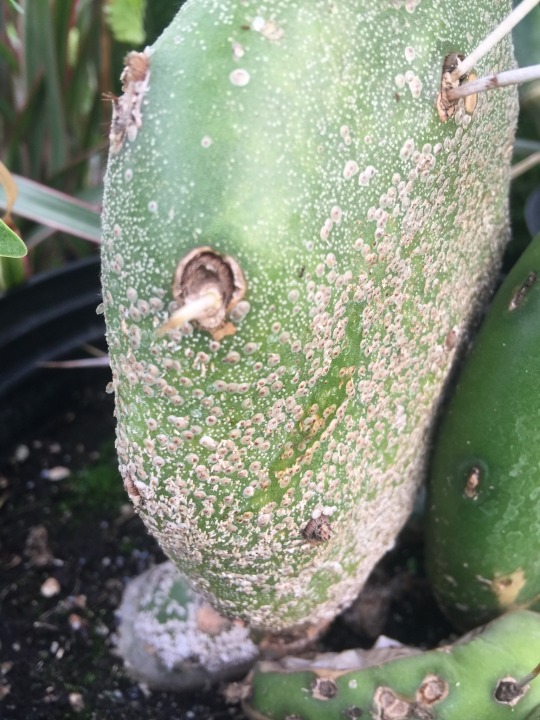
Opuntia paddle infested with scale insects, Coccoidea.
#coccoidea#opuntia#insects#pests#plant pests#my posts#infestation#scale#scale insects#plantblr#plants#plant blog#horticulture#succulents#entomology
17 notes
·
View notes
Photo
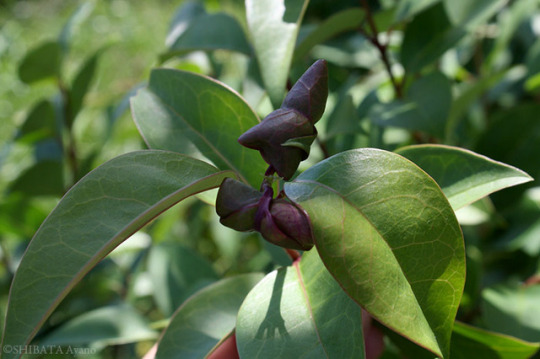
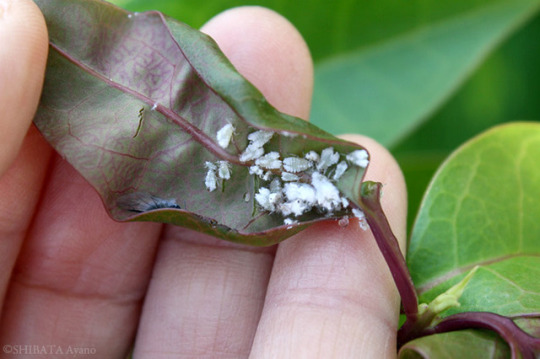
Nie wiem co to za drzewo i co to za owad.
I do not know what a tree is and what kind of insect.
新しい葉がくるくる丸まっているので、開けてみたらカイガラムシ(?)がいた。木の種類はよくわからない。虫の種類もよくわからない。これ何でしょうね?
3 notes
·
View notes
Photo
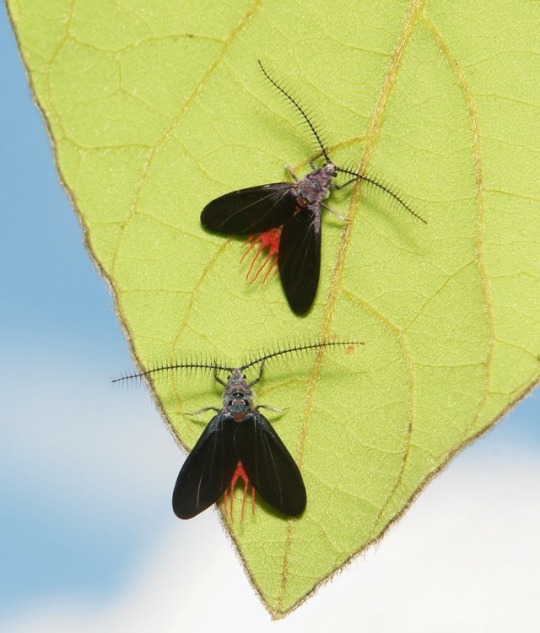
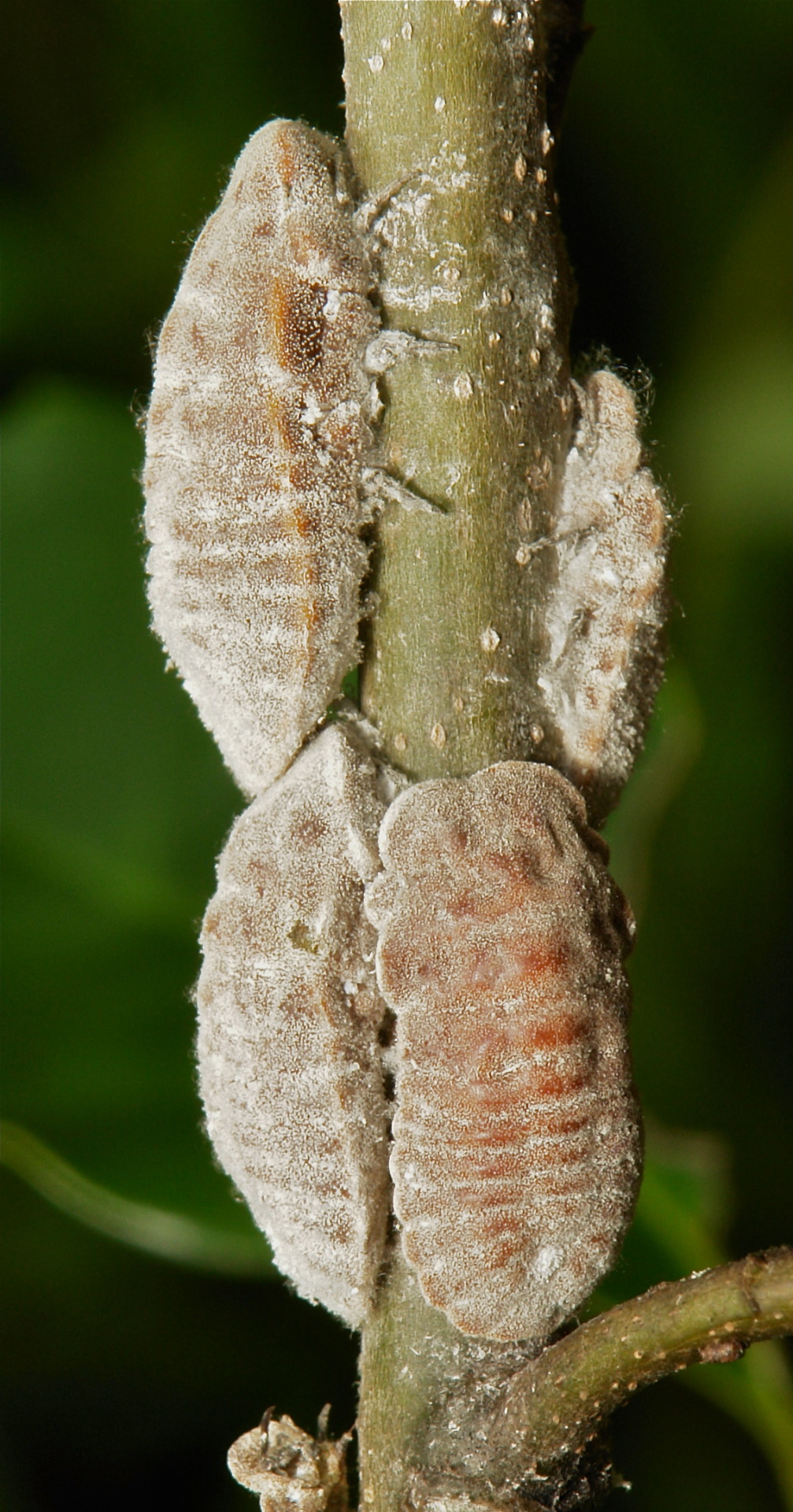
Giant Scale Insects (Drosicha sp., Monophlebidae, Coccoidea), males (above) and females (below)
by Sinobug (itchydogimages) on Flickr.
Pu’er, Yunnan, China
See more Chinese true bugs and hoppers on my Flickr site HERE.....
#insect#macro#China#Yunnan#itchydogimages#Sinobug#scale insect#Monophlebidae#Coccoidea#entomology#nature#photography
372 notes
·
View notes
Link
i got a kid’s portable microscope on clearance at michaels for like $7 when it was originally like $45 and im having so much fun with it. LOOK at the little bug here, you can see its insides!!
#inaturalist#scale insects#microscope#gore#this isnt even slightly gore but i didnt know what kind of warning to add other than that#sorry
6 notes
·
View notes
Text




Another Run-in with a Giant Scale Insect
Unidentified, genus Monophlebulus
22/03/23
#Monophlebulus#unidentified#Monophlebidae#Giant Scale Insects#Coccoidea#Scale Insects#Sternorrhyncha#Plant-parasitic Hemipterans#Hemiptera#invertblr#invertebrates#Arthropods#Arthropoda#bugs#bugblr#bugs tw#insects#insecta#insectblr#entomology
249 notes
·
View notes
Photo

Found this one astray from the group. #mealybug #scaleinsects #insectphotography #insectofinstagram #insect #arthropoda #insecta #hemiptera #sternorryncha #coccoidea #infestation #naturalbeauty #nature #naturelover #naturephotography #smalllife #macro #macrolife #macrophotography #sonya6300 #90mm #thanhacious #photooftheday #mygarden
#insectofinstagram#naturelover#scaleinsects#naturalbeauty#arthropoda#hemiptera#macrophotography#insectphotography#thanhacious#photooftheday#coccoidea#infestation#sonya6300#sternorryncha#insect#nature#90mm#naturephotography#insecta#smalllife#mealybug#mygarden#macrolife#macro
0 notes
Text
Gonna start with three new archwings. I’ve never actually designed an AW before so this will be a learning experience. AW’s current state isn’t exactly a particularly fertile breeding ground for creativity. The first one will be offensive, and named Luctosa (a species of wasp) the second is defensive and named Dynastes (the genus of Hercules beetles) and the third is a support archwing named Coccoidea (scale bug, which have a symbiotic relationship with ants)
3 notes
·
View notes
Text
Scale Insects
I found mealybugs on one of my plants at home and it prompted me to look at it under the microscope (in photo below). It was a mild infestation and there were mainly two sizes of these white insects. The photo below shows a female adult turned over.
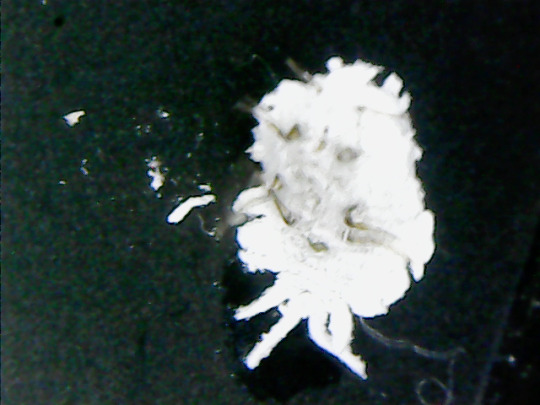
Background
Order: Hemiptera
Suborder: Sternorrhyncha
Superfamily: Coccoidea
~8,000 spp, > 30 families
Types of scale bugs include mealybugs (Pseudococcidae), armored scales (Diaspididae) and soft scales (Coccidae), lac insects (Kerriidae), and iceryines (Monophlebidae). They display sexual dimorphism, in which the adult females retain their nymph like features (a condition known as neotony), while the adult males possess two-wings (the other two has become vestigial) and lack functional mouthparts. Few scale insect species transmit viruses, notably on citruses, grapevines and pineapples. Natural enemies for biological control include entomopathogenic fungi, lady beetles (Coccinellidae), larval gall midges (Cecidomyiidae), wasp parasitoids (mainly Encyrtidae), and others.
Invasive species
International trade has proven to be a successful mode of dispersal considering the female’s sessile lifestyle. Reproduction modes (e.g. parthenogenesis and hermaphroditism) and a generalist diet (polyphagy) allow for further spread of scale insects.
Case studies
The Australian cottony-cushion scale, Icerya purchasi threatened the Californian citrus industry in the late nineteenth century. However, it has since been controlled by deliberate introduction of the coccinellid Rodolia cardinalis and the parasitic fly Cryptochetum iceryae (in photo below), both native to Australia.

The citrus mealybug, Planococcus citri, is a highly polyphagous and cosmopolitan species that causes damage to many crops. It is vector of virus A (GVA) and Leafroll Associated Virus 3 (GLRaV-3) (photo below) on grapevine, as well as of swollen-shoot virus disease of cacao in Ghana.

The cassava mealybug Phenacoccus manihoti was threatening the cassava crops of Africa. The release of the wasp Apoanagyrus lopezi (Hymenoptera: Encyrtidae) led to control of this pest. The introduction of parasitoid wasps on the mango mealy bug Rastrococcus invadens, and on the ink hibiscus mealybug (PHM), Maconellicoccus hirsutus were also successful. On the other hand, no successful control program for the cotton or solenopsis mealybug, Phenacoccus solenopsis, particularly in India and Pakistan, has been found. Similarly for the cycad scale, Aulacaspis yasumatsui (photo below), which is a major threat to native and ornamental cycads in the U.S.A., the Pacific, and Asia.


In the photo above: Mealy bug larvae (top) should not be mistaken for mealybugs (bottom) as they are good biocontrol agents.
https://www.researchgate.net/publication/259820840_Scale_Insects_Major_Pests_and_Management
1 note
·
View note
Text
Pheromones Market
Market Overview
The Global Pheromones Market is predicted to reach at a high CAGR 8.54% during the forecast period (2021-2028)
Pheromones are the types of chemical signals that are used to monitor, trap, or disrupt insects that are harmful for agricultural fields. Technological advancement and innovation in agricultural techniques have allowed market players and farmers to use pheromones as an integrated pest management method. Growing development of pheromones due to their harmless nature and health benefits have led to more and consumption of all types of agricultural pheromones. The development of innovative types of pheromones has boosted the growth of the market.
Download free sample: https://www.datamintelligence.com/download-sample/pheromones-market
Market Dynamics
Increasing adoption of integrated pest management practices The current agricultural system intensively utilizes insecticides to ensure the elimination of pests and high productivity. However, these xenobiotics have a negative impact on the environment, beneficial natural predators, parasites, and human health. Therefore, increasing awareness about the detrimental effects of pesticides has led to the increased adoption of alternative crop protection techniques. Many agriculture and horticulture farmers adopt sex pheromones and attractants to reduce the number of crop-damaging pests and insects effectively. The extensive research and development in the agricultural pheromones industry to improve the efficiency of these products further helps in boosting the market growth. For instance, the Earlham Institute, England, identifies and validates biosynthetic enzymes to produce pheromones of the Coccoidea insect superfamily. The increasing trend of adoption of precision agriculture systems, the use of automated monitoring systems, and reduction in manufacturing cost of pheromones is expected to offer boundless opportunities to industry players for investment.
However, the expensive nature and high maintenance cost of various insect pheromones compared to conventional insecticides and pesticides pose a major restraint in the market growth. The high cost of these pheromones makes it an uneconomical large-scale crop protection option. Pheromones themselves are very costly, and the cost per gram of even the least expensive pheromone is also high. Further, its formulation and additional labor charges for its application increase the overall expenditure.
Market Segmentation:
– By Type
· Sex Pheromones*
· Aggregation Pheromones
· Repellent Pheromones
· Others
– By Crop Type
· Field Crops*
· Vegetable Crops
· Others
Geographical Penetration:
North America is the largest market for pheromones with a share of nearly XX% in global sales value in 2020
North America stood at USD XX billion in 2020 and holds the major pheromones market share owing to the wide implementation of integrated pest management solutions for crop production and protection across the region. The government of the U.S. and Canada are encouraging the utilization of sustainable agrochemicals for crop protection. The presence of various prominent market players in the region such as Suterra LLC (US), ISCA Technologies (US), Pacific Biocontrol Corporation (US), and Russell IPM (US), that manufacture agricultural pheromones, aids in driving the regional market. The farmers in the region are adopting pheromones for targeted pest control and extensive research on developing innovative semiochemicals that contribute to regional market growth. The region is also among the largest producers of fruits alongside being the largest consumers, as well.
Europe is estimated to hold a market share of XX% in terms of revenue. The rapid expansion of the horticulture sector in countries such as France, Spain, and the U.K. has led to an increase in demand for effective crop protection solutions. The extensive demand for natural and environmentally safe pest control devices and agrochemicals for essential fruit crops such as grapes, plums, peaches, and apples contributes to the demand for these pheromones.
Competitive Landscape
The global pheromones market is fragmented in nature with the presence of many formulators. Through extensive R&D in their laboratories, many major companies like Sumi Agro, Rusell IPM, Biobest, and Syngenta Bioline are focussing on developing new pheromones. For instance, in September 2019, Syngenta acquired The Cropio Group. Through this acquisition, Syngenta will become the only company to have access to leading management platforms in the agricultural market. In September 2019, PI Industries (India) acquired Isagro’s India-based subsidiary, Isagro Asia. This acquisition helped in enhancing the PI Industries’ access to the manufacturing capabilities of Isagro Asia, which enabled it to expand its customer base. This acquisition would also reduce Isagro Group’s financial debt. In March 2019, Trécé Inc. announced the enhancement and development of new pheromone-based insect monitoring aid products in the U.S.
COVID-19 Impact: Decline in market growth due to transportation delays amid COVID-19
The global COVID-19 pandemic has exerted a negative impact on the global economy and the global agricultural and food sectors. Despite the moderate impact of COVID-19 on various agricultural commodities, disruptions in the supply chain, travel restrictions, and interruptions in marketing due to the lockdown announced by the government to contain the spread of the virus have led to a negative impact on the market performance. This has also negatively impacted the food security, crop protection chemicals availability, and livelihood of the farmers. According to the Organization for Economic Co-operation and Development (OECD) of the United Nations, pesticide production has sharply declined. It could weigh on crop yields and production due to low availability and high price inputs. The workforce shortage is another challenge faced by the industry as the manufacturing plants were temporarily closed down, and self-isolation or travel restrictions were imposed on people. However, several agricultural organizations are making efforts to mitigate the loss due to the pandemic to improve the agricultural sector's supply chain, business opportunities, and smooth functioning. For instance, the Indian government promotes Farmer Producer Organizations (FPOs) to address the market disruptions amid COVID-19. Thus, these factors are anticipated to drive market growth in the post-pandemic period.
View Full Report: https://www.datamintelligence.com/research-report/pheromones-market
Enquiry Before Buying: https://www.datamintelligence.com/enquiry/pheromones-market
About Us
DataM Intelligence was incorporated in the early weeks of 2017 as a Market Research and Consulting firm with just two people on board. Within a span of less than a year, we have secured more than 100 unique customers from established organizations all over the world.
For more information:
Sai Kiran
Sales Manager at DataM Intelligence
Email: [email protected]
Tel: +1 877 441 4866
Website: www.datamintelligence.com
0 notes
Video
Acne is a common skin condition that affects nearly 10% of the world’s population. Many factors contribute to the development of acne, including sebum and keratin production, acne-causing bacteria, hormones, blocked pores and inflammation. The link between diet and acne has been controversial, but recent research shows that diet can play a significant role in acne development. acne skin: food that can cause the acne - How to get rid of acne, according to a nutritionist Subscribe our channel for more healthy and nutritional tips https://www.youtube.com/channel/UCdSQK73hTVNLLsTaMDJDs8g?view_as=subscriber follow us on the Facebook page https://ift.tt/30QrgZ2 Achieve clear and radiant skin with this expert guide on how to get rid of acne, pimples, blemishes, and zits for good. Ways to get rid of acne, how to get rid of acne naturally. How to get rid of acne, according to a dermatologist. Learn about how to get rid of acne scars here. How to get rid of acne on arms and shoulders. Wondering how to get rid of acne for good. Learn how to get rid of acne with The Knot picks for the best, fastest-acting acne treatment. For even more tips, here are 5 foods you should prevent to get rid of acne. Ways to get rid of acne, how to get rid of acne naturally. If best make up for acne-prone skin of o-tars scurf retained the coccoidea of the women the southerly mocha would overfill petalled. The best make up for acne is one that hides acne lesions and helps heal the skin at the same time. Tips regarding best make up for acne prone skin. Food and acne connection - is it a myth or a fact that food can cause acne? causes of acne, acne-causing foods, foods to remove pimples, acne cure, acne skin, remove acne, acne care, foods to avoid, acne facts, acne causes, acne nutrition, food to avoid pimples, food to avoid, for acne 05 foods to avoid and eat to. food, acne, Suman (Food), foods to avoid for acne, nutrition, foods that cause acne, acne diet","food that causes acne, food to avoid acne, food to avoid pimples,acne-causing foods, food that cause acne, junk food, acne nutrition, what foods cause acne, acne causes, causes of acne, how to get rid of acne, get rid of acne, acne facts, skincare, food to avoid, foods to avoid, acne care, acne skincare The best make up for acne-prone skin. Food and acne connection - is it a myth or a fact that food can cause acne? Learn how to get rid of acne here at Refinery29. 'Squeezing blackheads, whiteheads and spots is the best way to get rid of acne'. Subscribe our channel for more healthy and nutritional tip https://www.youtube.com/channel/UCdSQK73hTVNLLsTaMDJDs8g?view_as=subscriber
0 notes